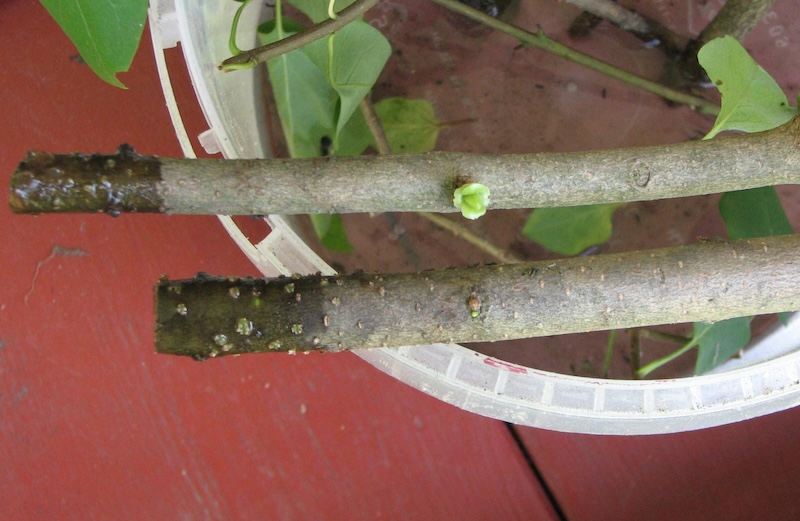Lilacs are springtime favorites that produce some of the most lovely and fragrant flowers. Propagating lilacs is an easy way to fill your space with even more blooms each spring. Lilacs can be propagated through cuttings, suckers, or from seed. Each propagation method is easy and requires few supplies to be successful.

Photo by Kenneth Hong, cropped and rotated, Flickr, copyright CC BY-ND 2.0 DEED
Methods To Propagate Lilac
Propagating lilacs from seed is possible but time-consuming. Plants grown from seed may need up to five years before they bloom, so this is not the best option if you want to enjoy flowers as soon as possible.
Suckers and cuttings are a better choice if you want blooming plants as early as the following spring. Suckers are offshoots that grow from the roots and are found near the base of the plant. These offshoots are often pruned out to direct energy into the main plant. With careful digging, they can be removed with some roots to create new plants.
Cuttings are simply sections of branches that are removed and placed in a medium like potting soil to root. Once the cuttings develop a root system, they become full-fledged shrubs and can be planted.
What You Need To Propagate Lilac
To extract a sucker, you’ll need a trowel to remove the dirt at the base of the plant and expose the roots. Use clean and sharp pruning shears to remove a sucker. Establish a sucker or root cutting in a pot with drainage holes. Root two to three cuttings in an 8-inch container. Use a high-quality potting mix that is moist and well-drained. For best results, use a plastic dome or a sheet of plastic to tent the cutting, increasing the humidity.
Best Time To Propagate Lilac
Remove suckers or take softwood cuttings in the spring or early summer when the plant is actively growing. Combine the tasks of taking cuttings with routine pruning, and wait until the lilac is done blooming. Pruning helps an existing plant grow full and bushy, and sections removed during pruning can be used to propagate new plants. Hardwood cuttings taken later in the season are less likely to root and be successful, although the resulting plants are often stronger and better equipped to grow outdoors.
Steps To Propagate Lilac
Step 1 - Take softwood cuttings in late spring or early summer. Wait until the plant is done blooming but is still actively growing. Take hardwood cuttings when the plant is dormant and has no green leaves.
Step 2 - Remove a branch measuring 5 to 6 inches long. Trim below the leaf node so the node is included in the softwood cutting. Hardwood cuttings should be slightly longer, with at least three nodes.
Step 3 - Fill a pot with a moist, well-drained potting mix. Make sure the pot has drainage holes.
Step 4 - Remove the lower leaves, exposing the node. Keep a couple of sets of upper leaves. It isn’t necessary, but you can dip the cut end in rooting hormone to increase the chance of rooting.
Step 5 - Place the cutting in the prepared container and position the cut end about two inches deep.
Step 6 - Place the cutting in a spot with bright, indirect sunlight and increased humidity. Tent the cutting with plastic to increase the humidity if necessary. Keep the potting mix moist but not soggy.
Caring For Young Lilac Cuttings
It often takes several weeks for a softwood cutting to root (and several months for a hardwood cutting). During that time, ensure the cutting receives plenty of bright, indirect sunlight and extra humidity. Water when the top layer of the soil is dry. Keep the potting mix moist but not saturated. You will know the cutting has roots when you can gently tug on the main stem and feel resistance. Continue to provide the same amount of sunlight, but scale back on watering and wait until the top few inches of potting mix are dry. The young plant can be transplanted during the fall or in early spring.
